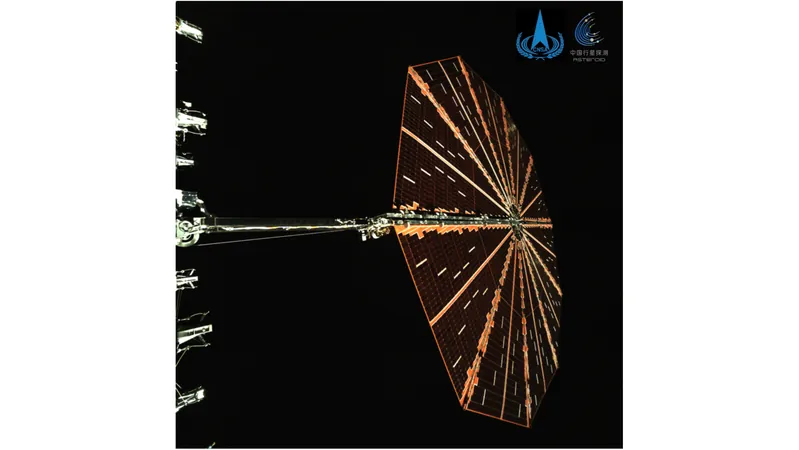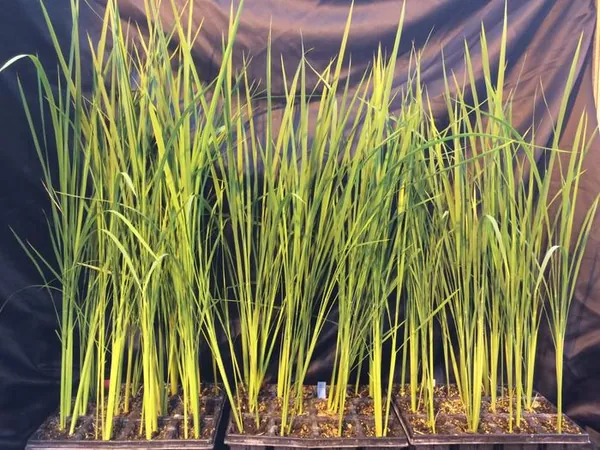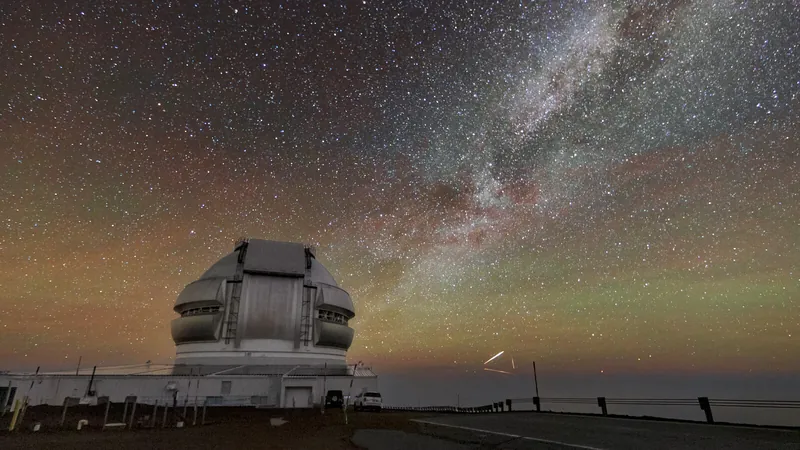
China's Ambitious Tianwen 2 Spacecraft Captures Stunning First Image on Quest for Mysterious 'Quasi-Moon' Asteroid!
2025-06-08
Author: Liam
In an exciting breakthrough, China has shared the first image from its groundbreaking Tianwen 2 mission, as the spacecraft embarks on its journey to explore the captivating near-Earth asteroid Kamo'oalewa.
Launched on May 28 aboard a Long March 3B rocket, Tianwen 2's mission is to rendezvous with the enigmatic Kamo'oalewa, one of Earth's seven known 'quasi-moons.' According to the latest updates from the China National Space Administration (CNSA), everything is proceeding smoothly!
As of now, Tianwen 2 is over 3 million kilometers (1.86 million miles) away from Earth, successfully performing its designated tasks. The CNSA has provided an engineering camera image of the spacecraft, showcasing one of its two circular solar panels, reminiscent of those seen on NASA’s Lucy mission aimed at the Trojan asteroids.
This revelation marks the first public glimpse of Tianwen 2, coming after months of anticipation during which only artistic renderings were available. Notably, the spacecraft's launch was not broadcast live, heightening the excitement surrounding its mission.
Tianwen 2 is slated to reach Kamo'oalewa in July 2026, following a series of carefully calculated engine burns to perfect its orbit. Once it arrives, the spacecraft will spend several months studying the asteroid, believed to possibly stem from a chunk of the moon ejected by a colossal impact.
After gathering samples, Tianwen 2 plans to return them to Earth using a specially designed reentry capsule, with arrival projected for late 2027. As an additional twist, the mission will take advantage of Earth’s gravity to propel the spacecraft on a daring journey to encounter the main belt comet 311P/PANSTARRS around 2035.
Through this remarkable mission, which combines the exploration of both an asteroid and a comet, scientists aim to unlock critical insights regarding the formation and evolution of our solar system, as well as the origins of water on Earth.
But this isn't China's first deep space exploration feat. Back in 2012, the Chang'e 2 lunar orbiter conducted a flyby of the asteroid Toutatis during an extended mission after mapping the moon. Additionally, China's Chang'e 5 mission successfully retrieved samples from the moon's near side in 2020, with the Chang'e 6 mission planning to collect the first samples from the lunar far side in 2024.









 Brasil (PT)
Brasil (PT)
 Canada (EN)
Canada (EN)
 Chile (ES)
Chile (ES)
 Česko (CS)
Česko (CS)
 대한민국 (KO)
대한민국 (KO)
 España (ES)
España (ES)
 France (FR)
France (FR)
 Hong Kong (EN)
Hong Kong (EN)
 Italia (IT)
Italia (IT)
 日本 (JA)
日本 (JA)
 Magyarország (HU)
Magyarország (HU)
 Norge (NO)
Norge (NO)
 Polska (PL)
Polska (PL)
 Schweiz (DE)
Schweiz (DE)
 Singapore (EN)
Singapore (EN)
 Sverige (SV)
Sverige (SV)
 Suomi (FI)
Suomi (FI)
 Türkiye (TR)
Türkiye (TR)
 الإمارات العربية المتحدة (AR)
الإمارات العربية المتحدة (AR)